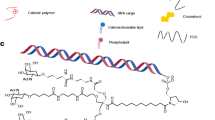Abstract.
“On-demand” regulation of gene expression is a powerful tool to elucidate the functions of proteins and biologically-active RNAs. We describe here three different approaches to the regulation of expression or activity of genes or proteins. Promoter-based regulation of gene expression was among the most rapidly developing techniques in the 1980s and 1990s. Here we provide basic information and also some characteristics of the metallothionein-promoter-based system, the tet-off system, Muristerone-A-regulated expression through the ecdysone response element, RheoSwitch®, coumermycin/novobiocin-regulated gene expression, chemical dimerizer-based promoter activation systems, the “Dual Drug Control” system, “constitutive androstane receptor” based regulation of gene expression, and RU486/mifepristone-driven regulation of promoter activity. A large part of the review concentrates on the principles and usage of various RNA interference techniques (RNAi: siRNA, shRNA, and miRNA-based methods). Finally, the last part of the review deals with historically the oldest, but still widely used, methods of temperature-dependent regulation of enzymatic activity or protein stability (temperature-sensitive mutants). Due to space limitations we do not describe in detail but just mention the tet-regulated systems and also fusion-protein-based regulation of protein activity, such as estrogen-receptor fusion proteins. The information provided below is aimed to assist researchers in choosing the most appropriate method for the planned development of experimental systems with regulated expression or activity of studied proteins.
Similar content being viewed by others
Abbreviations
- CAR:
-
constitutive androstane receptor
- dsRNA:
-
double-stranded RNA
- DHFR:
-
dihydrofolate reductase
- EcR:
-
ecdysone receptor
- FKBP:
-
FK506-binding protein
- FRAP:
-
FKBP-rapamycin-associated protein
- Hsp-90:
-
heat shock protein 90
- MRE:
-
metal-responsive elements
- miRNAs:
-
microRNAs
- MCM:
-
minichromosome maintenance
- NF-κB:
-
nuclear factor κB
- PBREM:
-
phenobarbital-responsive enhancer module
- tetR:
-
tetracycline-dependent repressor
- tTA:
-
tetracycline-controlled transactivator
- tetO:
-
tetracycline operator
- TK:
-
thymidine kinase
- RXR:
-
retinoid X receptor
- RNAi:
-
RNA interference
- RISC:
-
RNA-induced silencing complex
- shRNAs:
-
short hairpin RNAs
- siRNAs:
-
small interfering RNAs
- td :
-
temperature-inducible degron
- ts :
-
temperature-sensitive
- VP16:
-
virion protein 16 of herpes simplex virus
Author information
Authors and Affiliations
Corresponding author
Additional information
Helen K. Alexander, Evan P. Booy: Both authors contributed equally to this review manuscript.
About this article
Cite this article
Alexander, H.K., Booy, E.P., Xiao, W. et al. Selected technologies to control genes and their products for experimental and clinical purposes. Arch. Immunol. Ther. Exp. 55, 139–149 (2007). https://doi.org/10.1007/s00005-007-0025-7
Received:
Accepted:
Published:
Issue Date:
DOI: https://doi.org/10.1007/s00005-007-0025-7




